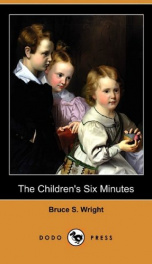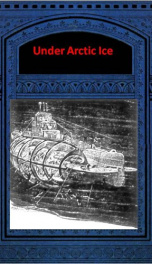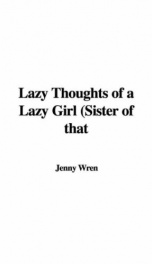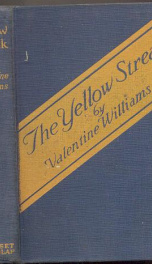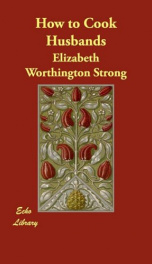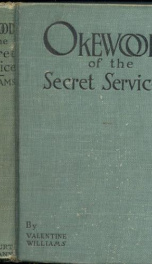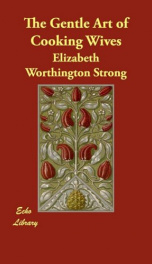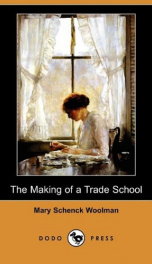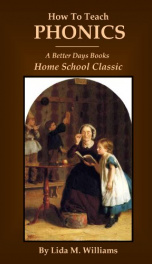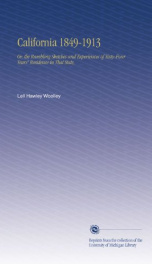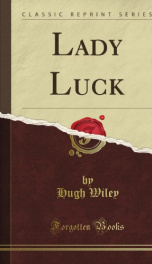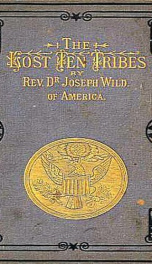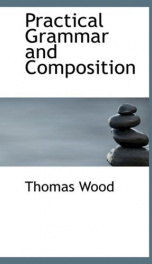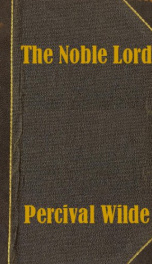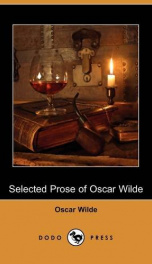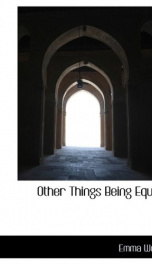Wollstonecraft Mary

Mary Wollstonecraft (pronounced /ˈwʊlstənkrɑːft/; 27 April 1759 – 10 September 1797) was an eighteenth-century British writer, philosopher, and feminist. During her brief career, she wrote novels, treatises, a travel narrative, a history of the French Revolution, a conduct book, and a children's book. Wollstonecraft is best known for A Vindication of the Rights of Woman (1792), in which she argues that women are not naturally inferior to men, but appear to be only because they lack education. She suggests that both men and women should be treated as rational beings and imagines a social order founded on reason. Among the general public and specifically among feminists, Wollstonecraft's life has received much more attention than her writing because of her unconventional and often tumultuous personal relationships. After two ill-fated affairs, with Henry Fuseli and Gilbert Imlay (by whom she had a daughter, Fanny Imlay), Wollstonecraft married the philosopher William Godwin, one of the forefathers of the anarchist movement. Wollstonecraft died at the age of thirty-eight, ten days after giving birth to her second daughter, leaving behind several unfinished manuscripts. Her daughter Mary Wollstonecraft Godwin, later Mary Shelley, would go on to author Frankenstein. After Wollstonecraft's death, William Godwin published a Memoir (1798) of her life, revealing her unorthodox lifestyle, which inadvertently destroyed her reputation for a century. However, with the emergence of the feminist movement at the turn of the twentieth century, Wollstonecraft's advocacy of women's equality and critiques of conventional femininity became increasingly important. Today Wollstonecraft is regarded as one of the founding feminist philosophers, and feminists often cite both her life and work as important influences. Wollstonecraft was born on 27 April 1759 in Spitalfields, London. Although her family had a comfortable income when she was a child, her father gradually squandered it on speculative projects. Consequently, the family became financially unstable and they were frequently forced to move during Wollstonecraft's youth.[1] The family's financial situation eventually became so dire that Wollstonecraft's father compelled her to turn over money that she would have inherited at her maturity. Moreover, he was apparently a violent man who would beat his wife in drunken rages. As a teenager, Wollstonecraft used to lie outside the door of her mother's bedroom to protect her.[2] Wollstonecraft played a similar maternal role for her sisters, Everina and Eliza, throughout her life. For example, in a defining moment in 1784, she convinced Eliza, who was suffering from what was probably postpartum depression, to leave her husband and infant; Wollstonecraft made all of the arrangements for Eliza to flee, demonstrating her willingness to challenge social norms. The human costs, however, were severe: her sister suffered social condemnation and, because she could not remarry, was doomed to a life of poverty and hard work.[3] Two friendships shaped Wollstonecraft's early life. The first was with Jane Arden in Beverley. The two frequently read books together and attended lectures presented by Arden's father, a self-styled philosopher and scientist. Wollstonecraft reveled in the intellectual atmosphere of the Arden household and valued her friendship with Arden greatly, sometimes to the point of being emotionally possessive. Wollstonecraft wrote to her: "I have formed romantic notions of friendship…I am a little singular in my thoughts of love and friendship; I must have the first place or none."[4] In some of Wollstonecraft's letters to Arden, she reveals the volatile and depressive emotions that would haunt her throughout her life.[5] The second and more important friendship was with Fanny Blood, introduced to Wollstonecraft by the Clares, a couple in Hoxton who became parental figures to her; Wollstonecraft credited Blood with opening her mind.[6] Unhappy with her home life, Wollstonecraft struck out on her own in 1778 and accepted a job as a lady's companion to Sarah Dawson, a widow living in Bath. However, Wollstonecraft had trouble getting along with the irascible woman (an experience she drew on when describing the drawbacks of such a position in Thoughts on the Education of Daughters (1787)). In 1780 she returned home, called back to care for her dying mother.[7] Rather than return to Dawson's employ after the death of her mother, Wollstonecraft moved in with the Bloods. She realized during the two years she spent with the family that she had idealized Blood, who was more invested in traditional feminine values than was Wollstonecraft. But Wollstonecraft remained dedicated to her and her family throughout her life (she frequently gave pecuniary assistance to Blood's brother, for example).[8] Wollstonecraft had envisioned living in a female utopia with Blood; they made plans to rent rooms together and support each other emotionally and financially, but this dream collapsed under economic realities. In order to make a living, Wollstonecraft, her sisters, and Blood set up a school together in Newington Green, a Dissenting community. Blood soon became engaged and after their marriage her husband, Hugh Skeys, took her to Europe to improve her health, which had always been precarious.[9] Despite the change of surroundings Blood's health further deteriorated when she became pregnant, and in 1785 Wollstonecraft left the school and followed Blood to nurse her, but to no avail.[10] Moreover, her abandonment of the school led to its failure.[11] Blood's death devastated Wollstonecraft and was part of the inspiration for her first novel, Mary: A Fiction (1788).[12] After Blood's death, Wollstonecraft's friends helped her obtain a position as governess to the daughters of the Anglo-Irish Kingsborough family in Ireland. Although she could not get along with Lady Kingsborough,[13] the children found her an inspiring instructor; Margaret King would later say she "had freed her mind from all superstitions".[14] Some of Wollstonecraft's experiences during this year would make their way into her only children's book, Original Stories from Real Life (1788).[15] Frustrated by the limited career options open to respectable yet poor women—an impediment which Wollstonecraft eloquently describes in the chapter of Thoughts on the Education of Daughters entitled "Unfortunate Situation of Females, Fashionably Educated, and Left Without a Fortune"—she decided, after only a year as a governess, to embark upon a career as an author. This was a radical choice, since, at the time, few women could support themselves by writing. As she wrote to her sister Everina in 1787, she was trying to become "the first of a new genus".[16] She moved to London and, assisted by the liberal publisher Joseph Johnson, found a place to live and work to support herself.[17] She learned French and German and translated texts,[18] most notably Of the Importance of Religious Opinions by Jacques Necker and Elements of Morality, for the Use of Children by Christian Gotthilf Salzmann. She also wrote reviews, primarily of novels, for Johnson's periodical, the Analytical Review. Wollstonecraft's intellectual universe expanded during this time, not only from the reading that she did for her reviews but also from the company she kept: she attended Johnson's famous dinners and met such luminaries as the radical pamphleteer Thomas Paine and the philosopher William Godwin. The first time Godwin and Wollstonecraft met, they were both disappointed in each other. Godwin had come to hear Paine, but Wollstonecraft assailed him all night long, disagreeing with him on nearly every subject. Johnson himself, however, became much more than a friend; she described him in her letters as a father and a brother.[19] While in London, Wollstonecraft pursued a relationship with the artist Henry Fuseli, even though he was already married. She was, she wrote, enraptured by his genius, "the grandeur of his soul, that quickness of comprehension, and lovely sympathy".[20] She proposed a platonic living arrangement with Fuseli and his wife, but Fuseli's wife was appalled, and he broke off the relationship with Wollstonecraft.[21] After Fuseli's rejection, Wollstonecraft decided to travel to France to escape the humiliation of the incident, and to participate in the revolutionary events that she had just celebrated in her recent Vindication of the Rights of Men (1790). She had written the Rights of Men in response to Edmund Burke's conservative critique of the French Revolution in Reflections on the Revolution in France (1790) and it made her famous overnight. She was compared with such leading lights as the theologian and controversialist Joseph Priestley and Paine, whose Rights of Man (1791) would prove to be the most popular of the responses to Burke. She pursued the ideas she had outlined in Rights of Men in A Vindication of the Rights of Woman (1792), her most famous and influential work.[22] Wollstonecraft left for Paris in December 1792 and arrived about a month before Louis XVI was guillotined. France was in turmoil. She sought out other British visitors such as Helen Maria Williams and joined the circle of expatriates then in the city.[23] Having just written the Rights of Woman, Wollstonecraft was determined to put her ideas to the test, and in the stimulating intellectual atmosphere of the French revolution she attempted her most experimental romantic attachment yet: she met and fell passionately in love with Gilbert Imlay, an American adventurer. Whether or not she was interested in marriage, he was not, and she appears to have fallen in love with an idealized portrait of the man. While Wollstonecraft had rejected the sexual component of relationships in the Rights of Woman, Imlay awakened her passions and her interest in sex.[24] She soon became pregnant, and on 14 May 1794 she gave birth to her first child, Fanny, naming her after perhaps her closest friend.[25] Wollstonecraft was overjoyed; she wrote to a friend: "My little Girl begins to suck so MANFULLY that her father reckons saucily on her writing the second part of the R[igh]ts of Woman" (emphasis hers).[26] She continued to write avidly despite not only her pregnancy and the burdens of being a new mother alone in a foreign country but also the growing tumult of the French Revolution. While at Le Havre in northern France, she wrote a history of the early revolution, An Historical and Moral View of the French Revolution, which was published in London in December 1794.[27]
do you like this author?
What readers are saying
What do you think? Write your own comment on this book!
write a commentWhat readers are saying
What do you think? Write your own comment on this author!
write a commentBook list

Posthumous Worksof the Author of A Vindication of the Rights of Woman
Series:
Unknown
Year:
Unknown
Raiting:
4/5
Show more
add to favoritesadd In favorites
Book list

Posthumous Worksof the Author of A Vindication of the Rights of Woman
Series:
Unknown
Year:
Unknown
Raiting:
4/5
Show more
add to favoritesadd In favorites

letters written during a short residence in sweden norway and denmark electro
Series:
Unknown
Year:
Unknown
Raiting:
3/5
Show more
add to favoritesadd In favorites

letters written during a short residence in sweden norway and denmark
Series:
Unknown
Year:
Unknown
Raiting:
2.5/5
Long regarded as Mary Wollstonecraft's most delightful work, this series of twenty-five letters is quite possibly the perfect fusion of their famous author's personal and intellectual selves. The letters were written to her lover, Gilbert Imlay, who had sent her to the Scan-dinavian countries as his business envoy dur-ing the summer of 1795. She was accompanied by her year-old daughter and a nursemaid on part of the journey, but frequently took side trips on her own. Informed by a wealth of ideas and years of wide reading, the letters combine landscape description, sociological observation, poetic reverie, and personal apostrophe. Never ceasing to observe the members of her own sex, Wollstonecraft is concerned with the plight of Scandinavian women, and expresses her views on child care. The modern reader will be struck by the contemporaneity of her comments on prison reform, capital punishment, property, and government. This first modern edition of the Letters has been lightly edited, increasing its readability while preserving the flavor of the original. It includes the author's original notes, editorial notes, an introduction, and a selected bibliography, as well as a map of the journey. --This text refers to an out of print or unavailable edition of this title.
Show more
add to favoritesadd In favorites

letters to imlay
Series:
Unknown
Year:
Unknown
Raiting:
4/5
Originally published in 1912. This volume from the Cornell University Library's print collections was scanned on an APT BookScan and converted to JPG 2000 format by Kirtas Technologies. All titles scanned cover to cover and pages may include marks, notations and other marginalia present in the original volume. --This text refers to an alternate Paperback edition.
Show more
add to favoritesadd In favorites

an historical and moral view of the origin and progress of the french revolution
Series:
Unknown
Year:
Unknown
Raiting:
2.5/5
Show more
add to favoritesadd In favorites
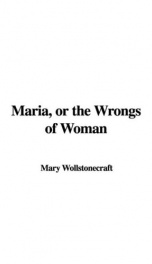
Maria, or the Wrongs of Woman
Series:
Unknown
Year:
Unknown
Raiting:
1.5/5
By Mary Wollstonecraft, an eighteenth-century British writer, philosopher, and feminist. She was the author of novels, treatises, a collection of letters, a book on history of French Revolution, on children’s education and children’s fiction. But A Vindication of the Rights of Woman appears her best known work, where she affirms that women are of the same degree of intellectual development as men are. “Maria, or the Wrongs of Woman” was published posthumously and considered to be the most radical feminist Wollstonecraft’s work. Here the author criticizes patriarchal, from her point of view, matrimony institution, as well as its harmful influence upon women. The action revolves around a woman, who was enclosed by her husband into asylum, where the heroine finds satisfaction out of her marriage in romance with a “cellmate” and in her friendship with one of the hospital attendants.
Show more
add to favoritesadd In favorites

Letters on Sweden, Norway, and Denmark
Series:
Unknown
Year:
Unknown
Raiting:
4/5
Mary Wollstonecraft (1759-1797) was an eighteenthcentury British writer, philosopher, and feminist. During her brief career, she wrote novels, treatises, a travel narrative, a history of the French Revolution, a conduct book, and a children's book. Wollstonecraft is best known for A Vindication of the Rights of Woman (1792), in which she argues that women are not naturally inferior to men, but appear to be only because they lack education. She suggests that both men and women should be treated as rational beings and imagines a social order founded on reason. The majority of her early productions centre around the topic of education; she assembled an anthology of literary extracts "for the improvement of young women" entitled The Female Reader. Her other works include Thoughts on the Education of Daughters (1787), Mary: A Fiction (1788), Original Stories from Real Life (1791), Letters on Sweden, Norway, and Denmark (1796), Maria; or, The Wrongs of Woman (1798), and Posthumous Works of the Author of A Vindication of the Rights of Woman (1798). --This text refers to an alternate Paperback edition.
Show more
add to favoritesadd In favorites
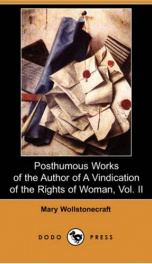
Posthumous Works
Series:
Unknown
Year:
Unknown
Raiting:
5/5
Mary Wollstonecraft (1759-1797) was an eighteenthcentury British writer, philosopher, and feminist. During her brief career, she wrote novels, treatises, a travel narrative, a history of the French Revolution, a conduct book, and a children's book. Wollstonecraft is best known for A Vindication of the Rights of Woman (1792), in which she argues that women are not naturally inferior to men, but appear to be only because they lack education. She suggests that both men and women should be treated as rational beings and imagines a social order founded on reason. The majority of her early productions centre around the topic of education; she assembled an anthology of literary extracts "for the improvement of young women" entitled The Female Reader. Her other works include Thoughts on the Education of Daughters (1787), Mary: A Fiction (1788), Original Stories from Real Life (1791), Letters on Sweden, Norway, and Denmark (1796), Maria; or, The Wrongs of Woman (1798), and Posthumous Works of the Author of A Vindication of the Rights of Woman (1798).
Show more
add to favoritesadd In favorites
What readers are saying
What do you think? Write your own comment on this author!
write a commentif you like Wollstonecraft Mary try:
readers also enjoyed
Info about the author
Name:
Wollstonecraft Mary
Born:
Influences:
none
Avg raiting:
2.53/5 (110)
Books:
What readers are saying
What do you think? Write your own comment on this author!
write a commentGenre
if you like Wollstonecraft Mary try:
readers also enjoyed
Do you want to exchange books? It’s EASY!
Get registered and find other users who want to give their favourite books to good hands!
